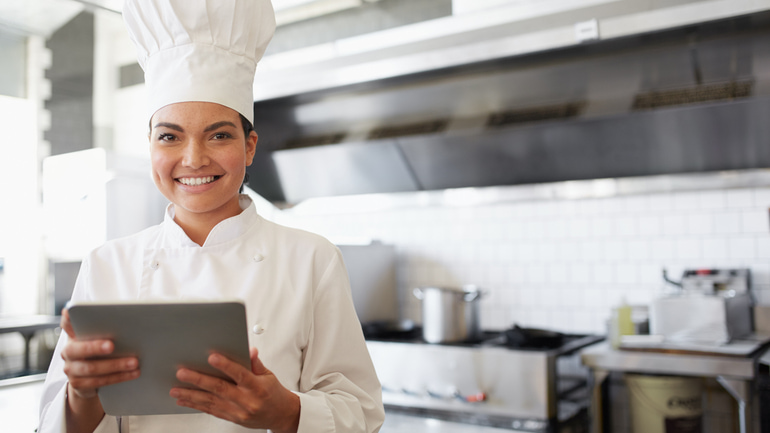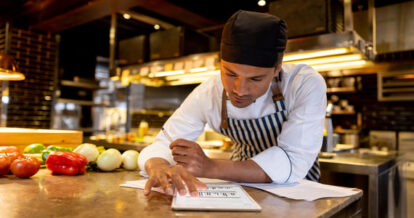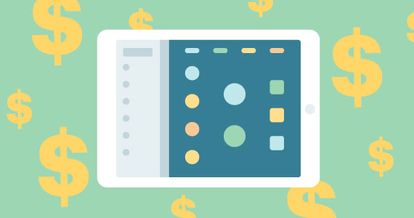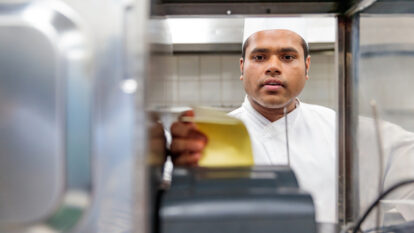Technology can make or break your restaurant’s back of house (BOH) operations. The right back of house software can help your business become more efficient and profitable, while poor performing or complicated tech can have the opposite effect.
If you got into this line of work for the food, software for BOH operations may not be your area of expertise. And with so many options available, it can be hard to know which to choose.
In this guide to restaurant back of house software, we’ll cover all the tech you need, including:
- Point of sale (POS) software
- Kitchen display system (KDS) software
- Inventory management software
- Accounting software
- HR software
- Back office management software
We’ll also give you three tips for purchasing restaurant BOH software to help you get the best bang for your buck. Let’s get started!
What is the Back of House?
Before purchasing software of any kind, it’s essential to have a basic understanding of the front of house vs back of house. The front of house is where your guests dine, and where your servers and bartenders work. In contrast, the back of house is like your restaurant’s backstage area – the place that makes all of the magic that happens in dining rooms and lounges possible.
The back of house includes three main areas: the restaurant kitchen, administrative offices, and employee spaces like break rooms and washrooms. While guests may never see these areas, they all play an integral role in your restaurant operations. After all, without your team, there would be no food cooked or served!
Although the back of house is often out of sight (except for open kitchens, of course), it’s a loud and busy place where a lot is happening at once. This is one reason why having the right restaurant back of house software is critical to keep it running smoothly.

What Back of House Software Solutions Do Restaurants Need?
Sorting through the myriad options available when it comes to back of house tech can be overwhelming, especially if you’re new to the process. Let’s walk through a few types of software that are essential for BOH operations.
Point of Sale (POS) Software
A POS lets your servers take orders and payments from guests – but the right POS can do so much more than that. Restaurateurs are asking for more, too, with 71% either purchasing a new POS system or switching their POS in the past year, according to our 2025 State of Restaurants Report.
Ultimately, your POS should drive sales collaboration between the front and back of house. For example, your chefs can curate their menus directly in the POS; and most connect with a robust inventory system so servers never serve items that are out of stock in your kitchen. Look for a solution that offer these features, as well as the ability to generate reports so you can track your restaurant’s performance over time.
With a robust system like TouchBistro’s Point of Sale, you get all of this and more. Your staff also have a mobile option to take orders tableside and send them directly to the kitchen. In addition, the tech helps to improve customer service by minimizing order errors and monitoring each table’s time seated.
Kitchen Display System (KDS Software)
Restaurant kitchen technology can help you wrangle the chaos in the back of house. Modern KDS software is designed to boost both accuracy and efficiency on the line. By integrating with your POS, orders placed by servers will appear immediately on the KDS screen so your kitchen can get cooking. This keeps you organized and reduces missed orders, especially if you have a commercial kitchen layout where many stations need to be involved in an order.
A solution like TouchBistro’s Kitchen Display System also works to keep your guests happy by including grouping features and ticket colors that change based on the time a ticket is open. This helps ensure diners at the same table receive their meals all at once.
Inventory Management Software
If you’re like most restaurateurs, inventory and food cost management is one the more stressful aspects of running a restaurant business. In fact, 26% say it’s their biggest source of financial strain, according to our 2025 State of Restaurants Report.
Restaurant inventory management software can make the process a little less painful by providing a tracking system that lets you know what ingredients and supplies you have on hand and when it’s time to stock up on more.
A robust solution will not only help you track inventory, but also decrease food waste, increase profit margins, and streamline back of house operations. For instance, TouchBistro Profit Management Powered by Margin Edge integrates with the TouchBistro POS, and connects with leading accounting software and inventory suppliers so operators can streamline their entire back office operation, uncover cost saving opportunities, and maximize profitability.
Accounting Software
The back of house is like the control room for your restaurant, but its functions go beyond just managing your kitchen. Administration of your restaurant’s finances is also a core component.
Keeping your books in order is imperative for the success of your restaurant, but it can be a lot of work, especially if you’re trying to manage it yourself. Accounting software like NetSuite, QuickBooks, or Xero can help you stay on top of your day-to-day financial transactions, accounts payable, accounts receivable and more, plus ensure you’re organized for tax season.
Depending on the size and complexity of your restaurant operations, you can either opt for a generic solution or something more customized. The key is to make sure your accounting software integrates with your POS to streamline the management of your finances.
HR Software
Your team is the heartbeat of your restaurant, which means HR is an area that requires your constant attention. The right HR software can support you in simplifying shift management, streamlining payroll, optimizing labor costs, and more.
With a system like TouchBistro and the Push Operations integration, you can store employee payroll details and set staff up with their own accounts to securely share data. You can also use the tech to calculate wages and labor costs, and run reports on overtime hours.
Back Office Management Software
Technology should make your job easier, which is why it’s common for restaurants to use a single solution for multiple back office functions. For example, software like TouchBistro Profit Management Powered by MarginEdge includes multiple different functions, like processing invoices digitally, paying bills (U.S. only), and sync sales and labor data from the TouchBistro POS.
Regardless of whether or not you choose an all-in-one solution, your back of house software should offer support in the following areas.
Bill Pay Software
Convenient bill pay solutions allow you to pay an unlimited number of bills directly through the system. This way, you can stay on top of your payments and avoid late fees, while maintaining strong relationships with your vendors.
Order Management and Procurement Software
Don’t let technology stand in the way of ordering from your preferred vendors. A quality solution will enable you to order products from any vendor, and transfer products and recipes between locations if you operate more than one venue.
Invoicing Software
Flexibility is crucial when it comes to invoicing. Look for a software that enables you to send invoices on the fly by emailing or photographing them – including any handwritten adjustments you make! Modern tech can capture and digitize these details for you.

Tips for Purchasing Restaurant BOH Software
We’ve covered the main types of restaurant kitchen technology and other BOH systems you need to keep your business operating smoothly and profitably. However, even within those specific categories, there’s a lot of variety.
Consider these tips as you make your selections, and don’t rush the process. In fact, companies take 20 weeks on average to decide on software, which shows the importance of choosing wisely. You want a system that will work for you for years to come.
1. Identify Your Needs
The technology requirements for a multi-national chain is going to be different from the requirements for a small, single-venue restaurant business. For example, a food truck might not need HR software, while a major chain will likely need solutions that support multi-location management.
It can be helpful to make a list of the non-negotiable features you need in a back of house software solution, then write down any additional nice-to-have items. This will ensure you get the essentials without paying for unnecessary extras.
2. Understand Your Goals
The possibilities for what software can help you accomplish are virtually endless. To narrow your field of vision and hone in on the right features, choose solutions based on your business goals. For instance, if you want to improve staff efficiency, pick a system that’s user-friendly and can boost your team’s productivity. Or, if you want to save time, look for a solution that automates a lot of repetitive tasks and cuts down on manual work.
Identifying your top business objectives for restaurant software can help you purchase a system that not only meets your day-to-day needs, but also helps you reach your long-term goals.
3. Less is More
Once you’ve identified which kinds of software your restaurant requires to meet your needs and achieve your business objectives, it’s time to get even more strategic. Instead of buying products from multiple vendors, try to get as many solutions as possible under one umbrella so you have less to manage.
Look for all-in-one solutions whenever possible, or work with a software provider that supports integrations with your preferred solutions. This will help you save both time and money.
The back of house is where the magic happens, and BOH operations have a significant impact on your guests’ experience in the dining room or even with takeout. But, the BOH can also be a hectic environment. The key is not to try to manage everything manually, but instead let smart software solutions do the heavy lifting for you. With tech like a POS, kitchen display system, and inventory software, you can increase both quality and efficiency at your restaurant.
You now know what to look for when it comes to back of house software and you’ve got three tips to help you choose wisely. Happy shopping!
Get the Complete Guide to Restaurant Reservations
Sign up for our free weekly TouchBistro Newsletter







